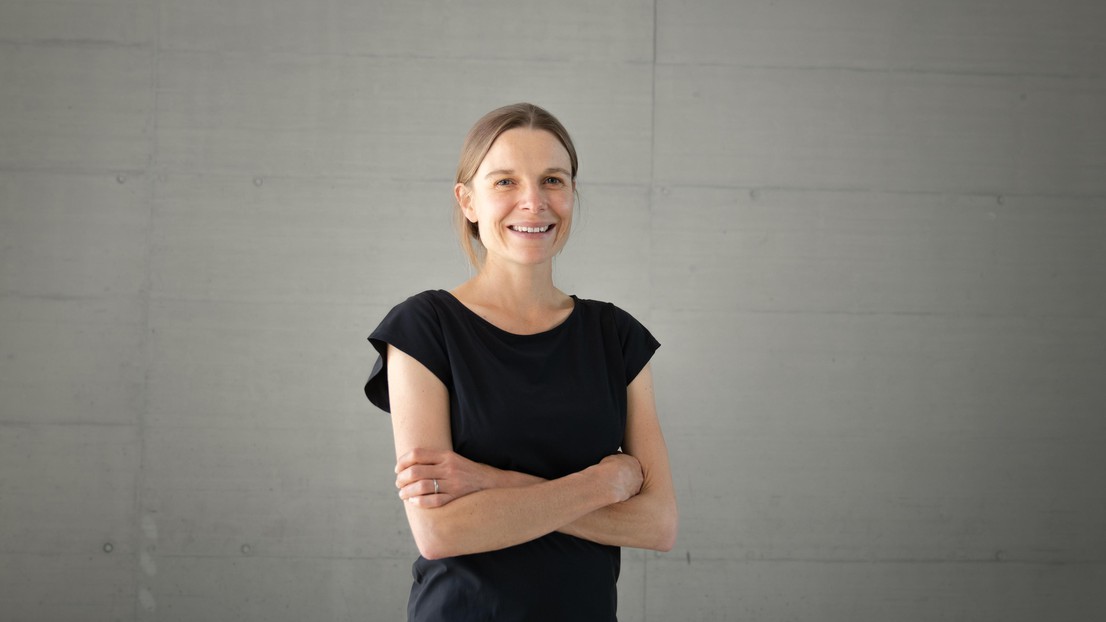Andrea Ablasser named Clarivate Citation Laureate

Andrea Ablasser - 2025 EPFL/Titouan Veuillet
Andrea Ablasser, Professor at EPFL, has been named a Clarivate Citation Laureate in Physiology or Medicine in recognition of her pioneering contributions to innate immunity. The distinction honors scientists whose research has opened new fields and profoundly shaped their discipline.
Viruses are the most abundant and diverse pathogens on earth, and every organism must defend itself against them. Andrea Ablasser’s research has contributed to understanding one of the biological principles underlying this defense: a signaling pathway that detects DNA — the blueprint of life — as a sign of viral infection. This discovery has transformed our understanding of immunity and has opened new therapeutic avenues. In recognition of her groundbreaking work, the scientist has received several of the most prestigious awards in biomedical research, among them the Paul Ehrlich and Ludwig Darmstaedter Prize (2025) and the EMBO Gold Medal (2021). “It shows that we have created knowledge of lasting value, which is very rewarding”, says Andrea Ablasser. “My motivation, however, has always been driven by pure curiosity to understand a biomedical phenomenon.”
On September 25, Clarivate named Andrea Ablasser a Citation Laureate in 2025, a recognition that identifies researchers whose work is highly cited and influential in their fields. Historically, many Citation Laureates have later been recognized with the Nobel Prize. Andrea Ablasser’s inclusion underscores the profound impact of her discoveries on our understanding of innate immunity and inflammation. “Clearly this is an immense recognition of our contribution to the field and I take a lot of proud to share it with Glen N. Barber and Zhijian ‘James’ Chen, two very good colleagues for many years," comments the researcher.
Scientific careers are often impressive, but Andrea Ablasser's stands out as particularly remarkable. At just over 40 years old, she has built a very solid position for herself in the highly competitive world of research. Early on, she was interested in basic medical research. “I was very passionate about math and physics and I studied medicine because I wanted to understand how our body works and what physiology is. My motivation was about curiosity-driven aspects more that solving problems on humans.”
During her medical studies, she already gained first research experience, which led her to pursue a postdoc where she then became fully devoted to doing science. "What fascinated me was that the immune system uses molecules from our own bodies as infection signals, which seems paradoxical. Working on this mystery is what I found very interesting."
In 2014, Ablasser established her own laboratory at EPFL. Her team investigates how cells sense and resist pathogens, how innate immunity is regulated at the molecular level, and how this shapes disease. Trained as a medical doctor, she also seeks to explore how research could translate into more effective therapies: “We have contributed to the development of candidate drugs that can dampen inflammation. Seeing them advance into clinical trials is very gratifying.”
A central focus of her research is the cGAS–STING signaling pathway, to which she made landmark contributions. This pathway detects DNA in the cytosol and triggers powerful inflammatory responses to combat viral infection. However, stress, aging, and certain diseases such as cancer can also cause self-DNA to activate cGAS–STING, with harmful consequences. “The same system that normally detects viruses can misperceive our own DNA as foreign — it cannot tell the difference,” Ablasser explains.
“Even though I think that I work a lot, it does not feel as ‘hard work’. Outside work, I enjoy spending time with my family and I also take time for runs or road biking tours”, says the scientist. In honoring her, Clarivate emphasized the significance of these discoveries: “For elucidating the cGAS–STING pathway, a fundamental mechanism of innate immunity, we congratulate Andrea Ablasser as a 2025 Citation Laureate.”